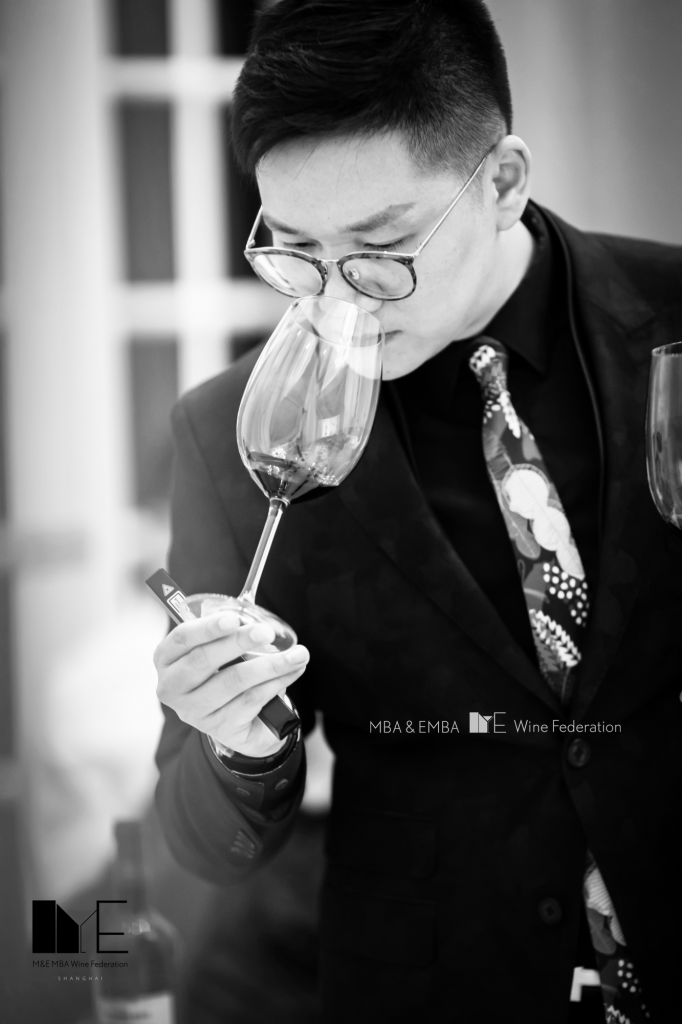Maison Lameloise, a hundred-year-old Michelin restaurant, is located on the 68th floor of the city’s highest building, Shanghai Tower. The restaurant’s unique layout is housed in a glass-and-metal structure allowing it to feature the best city views and capture an ultra-urban vibe. Surely it will soon be the go-to venue for special occasions. But don’t just focus on the delicate cuisine, remember to order a wine pairing with your food.
Today,GastronoMeet would like to take you to discover the secrets of Shanghai’s new top wine expert, the lead sommelier Maxime Duval of Maison Lameloise. Maxime agreed to share with us his career experiences and the story of how he became a sommelier.
How and When did you discover your passion for wine?
Wine is a family thing. My grandfather’s birthplace is close to Burgundy. I have tasted wines since age 12 with my grandfather and parents. My mother loves to cook and everyone in my family loves food and wine. Since I was a child, I would stay in the kitchen and cook with my mother. When I was 12, my father invited me to try the food with wines. And in France, for example, when you share a dinner with a friend, you MUST have wine. A dinner without wine is like a day without sunshine in Europe. The wine is very important.
Can you tell us what wine means to you?
For me, wine is sharing. Wine is something you share with family and friends. Sharing creates memorable moments. You can share wine with business associates, family, friends, and acquaintances. There are no rules. For me, sharing is the spirit of wine.
What are the key elements of being a great sommelier?
First of all, I think the most important thing is to understand what the customer is looking for. You have to not only find the best pairing but also learn what they like about wine. If they are looking for some full-bodied, light-bodied, delicate… Of course, it is very important to have knowledge. You need to have broad experience, including visiting vineyards and meeting with the winemakers.
What is the best part of being a sommelier, what do you love most about your job?
Trying wines of course. All sommeliers love to try different wines. This is the best part of the job. I love to travel to different vineyards and meet the winemakers. For example, I’m going back to France in February. I will stay with my family but will go to Burgundy to do a wine tasting. It’s great to be able to earn a living doing what I love to do.
As a head of sommelier of Lameloise, what are the biggest challenges?
To train people. All the staff is from Asia, most of them are from the Mainland and Taiwan. The hardest part is training. I used to travel to Asia, but this is my first real career in Asia. You cannot manage your staff in the same way as in France. I’ve had to learn and adapt to cultural differences.
What are the major difference working in China compared to your previous experience in Europe?
The difference is communication. Unfortunately, I don’t speak Chinese. Although I have taken some Chinese lessons previously, I don’t have much time for additional study. Sometimes I speak English, sometimes I call on others to help translate. Not being able to communicate is the most challenging part of the job. In this industry, it is important to clearly communicate with your staff and of course your customers.
More and more Asians want to become sommeliers. What would you suggest to them?
I don’t know if becoming a sommelier is the best goal. I don’t think many people can handle the pressure of the job. I would suggest that when they travel to Europe, remember to visit the winemakers and get to know the regions. If you can better understand the culture of wine, then you’ll better be able to understand the requirements of the job. For example, when I visit winemakers in Spain and Italy, they will explain their philosophies and I will gain knowledge of the wineries, regions, and grapes. I can them pass this knowledge along to my customers by sharing the stories of my visit.
Could you share an unforgettable wine tasting experience in your life?
It was in Burgundy and was the best experience in my life. I was visiting a very famous winery and was able to try many different exceptional wines. They were very welcoming, so I felt more like part of the family and could share a deeper connection.
More Chinese are now drinking wine. For new wine fans, what are your tips and suggestions to learn more about wine?
First of all, I need to know if they like light wines or strong wines. Everyone can start with sweet wine to begin. I would suggest you try the Burgundy region’s Chambolle Musigny. It is very delicate. Then later, they can try other red or white wines. Some people also start with Champagne, but some people don’t like bubbles, so they don’t like sparkling wine or champagne. It depends and there are no specific rules. If there is a good balance, doesn’t matter if it is white, red, dessert, or champagne.
Thanks for Maxime’s valuable information. Everyone who loves great foods and wines should definitely visit Maison Lameloise. Enjoy the stunning views while enjoying some of the finest and most inventive and delicious foods you will ever have, paired with carefully selected wines from all over the world. Tell Mr. Duval that GastronoMeet sent you.
